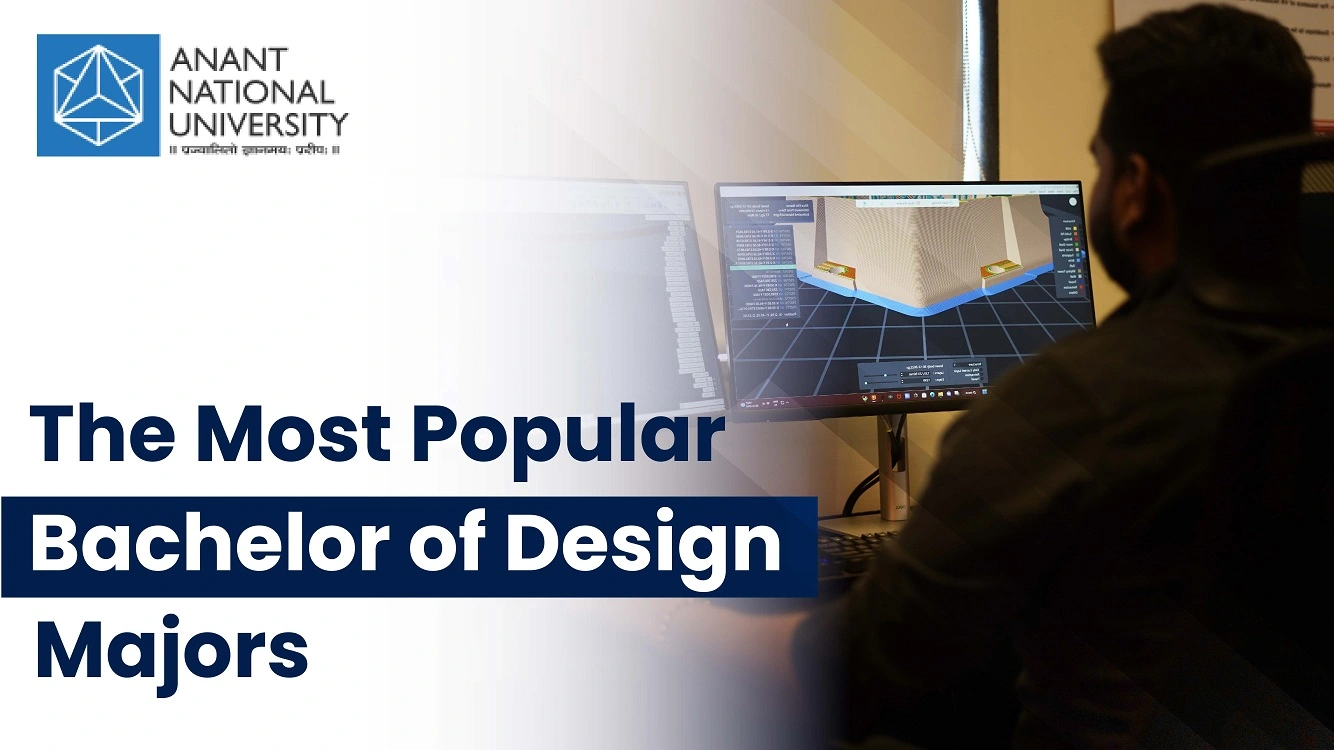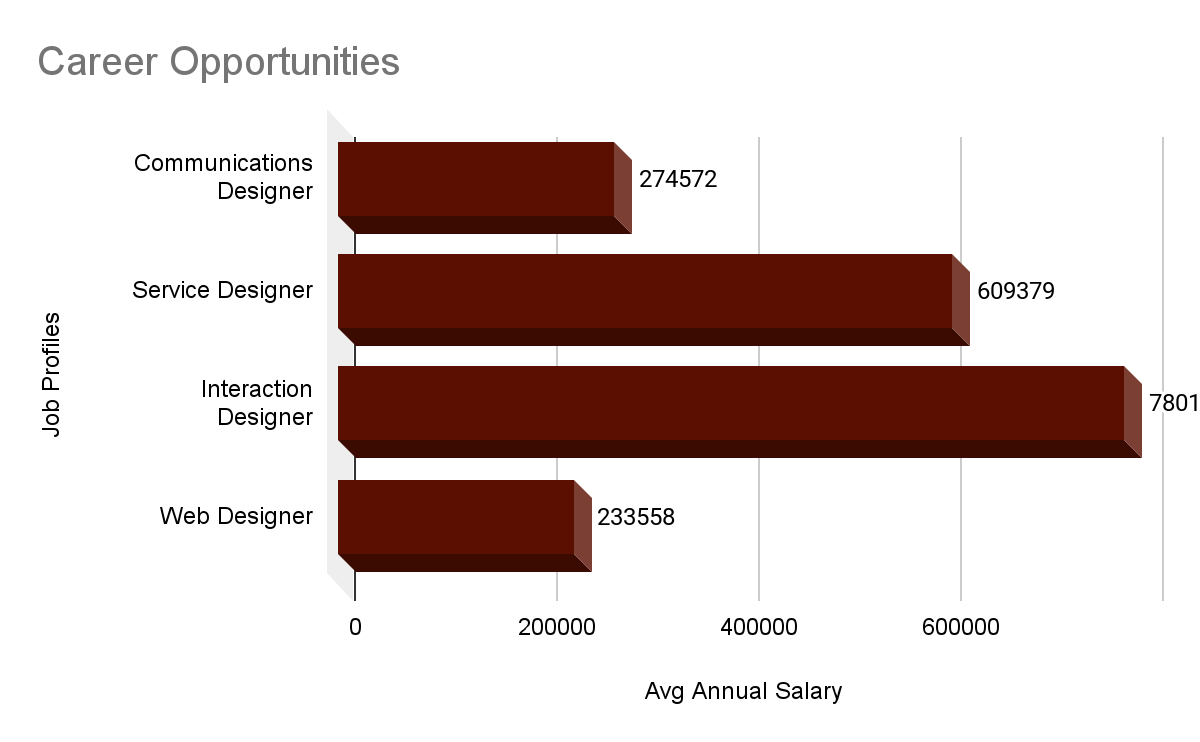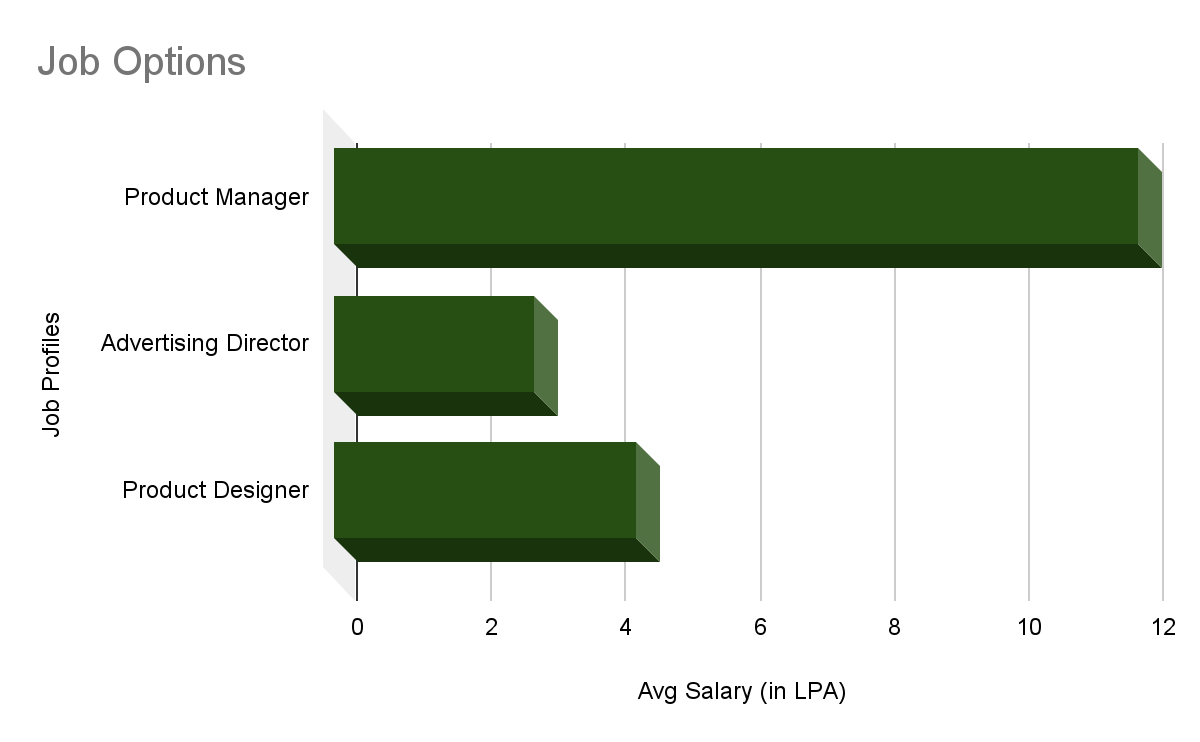

As we all know, a bachelors in design enables applicants to advance their
knowledge and expertise. In other words, this degree assists students in honing and
improving their skill sets for design. In addition, India design sector is expanding
at a 23 to 25% yearly rate, and hence the nation may need 62,000 designers in
multiple domains.
However, do you wonder what the components of this program are? Therefore, to
address your question, we set out to establish this blog, which also covers some of
the popular bachelor of design majors besides other pertinent information.
| Table of Contents: 1. Bachelor of Design- Course Overview 2. Which are the top Bachelor of Design majors? 3. Best Design University in India- Anant National University 4. Final Thoughts 5. FAQs |
A Bachelors degree in Design is a well-established full-time program of four
years. However, it provides technical training in a variety of areas related to the
fashion industry, garment industry, leather industry, knitwear design, accessory
design, etc. Also, it gives wide scope to students by letting them learn more
through internships, events, and exhibitions that are hosted both nationally and
overseas.
Depending on your area of design concentration, the syllabus structure may
change, but maximum bachelor of design colleges in the nation prioritize the
following topics:
| Semester I | Semester II |
|---|---|
| Art representation and transformation |
Typography Fundamentals and exploratory printing |
| Design and Human Evolution |
Knowledge organization and communication |
| Design studio I – problem identification |
Image representation and transformation –II |
| Fundamentals of Arts and Design (2D) |
World of images and objects |
| CAD – Photography and Videography |
Design Studio II –Problem Analysis |
| Applied Science for Designers |
|
| Self-initiated summer | |
| project |
| Semester III | Semester IV |
| 3D Form studies – Aesthetics, Identity, and Expressions | Design, Storytelling, and Narratives |
| Design, Society, Culture, and Environment | Design Studio IV – Prototyping |
| Design Studio III – Creative Explorations | Communication Theories, Visual Perception, and Semiotics |
| Environmental Studies – Science and Engineering | Elective- 3D Form Studies II or 2D Visual Studies II |
| 2D Visual studies I – word and image | Summer Project |
| Creative Thinking Process and Methods |
| Semester V | Semester VI |
| Applied Ergonomics | Elective III: Materials and Processes/Digital Media Technologies |
| Collaborative Design Project | Electives I and II: Animation Design Communication Design/ Film-Video Design/ Product Design II/ Interaction Design/Transportation Design/Game Design/ Product Ergonomics |
| Design, Technology, and Innovation | Design Management, Planning, and Professional Practice |
| Elective I and II: Information Graphics and Visualisation/ Moving Image Design / Product Design-I Design for Interactive Media /Mobility and Vehicle Design 3D modeling and prototyping | Industrial Summer Project |
| System Design Project |
| Semester VII | Semester VIII |
| Re-Design Project | BDesign Projects |
| Global Design Thoughts and Discourse | |
| Design Research Seminar |
Pursuing a Bachelor in Graphic Design is a great choice for students who are interested in learning Bachelor of Design.
This specialization is for students who wish to learn how to develop fashion and textile products that are both practical and sustainable for Indian and international markets. Additionally, a bachelor of textile design promotes responsible creativity among students as they solve design issues and master key design ideas including aesthetics, colour, shape, and style. And throughout its curriculum, the students are trained to build a critical knowledge of the social, cultural, economic, and sustainable issues that affect the environment and design innovation.

Understanding how systems and users interact mechanically is the focus of Interaction design discipline. Additionally, students learn how to detect users’ demands through appropriate research tools and scientific consumer analysis, and they build the capacity to holistically improve the user experience. And, in maximum circumstances, students use tools and concepts to learn the basics of managing digital projects and conduct a critical analysis of a digital product. Moreover, they work on a portfolio project that allows them to put what they have learned in class to use outside of the classroom.
At the nexus of design and information, a Bachelor of Communication Design teaches aspiring designers how to use communication techniques to establish a powerful connection between viewers and visuals. Also, to excite and inspire users to respond to communication, these students learn theories, techniques, and strategies. Overall, the students of this discipline gain expertise in multiple curriculum components, including graphic design, animation, and filmmaking, as well as technical topics like typography, photography, composition, and semiotics.

The goal of this research-driven, studio-based practical space design course is to develop space designers as critical thinkers, compassionate people, and creative makers/doers. It does, however, provide a variety of courses that assist designers in providing straightforward, useful, and aesthetically pleasing answers to space design-related issues. Overall, this design course improves students’ capacity to make connections, think holistically, and create straightforward, useful, and aesthetically pleasing solutions to space-related problems.
Its core competencies are strategic problem-solving techniques, innovation, entrepreneurship, and building user-centric solutions. In general, Product Design students study to create impactful goods, systems, services, and experiences through design. Additionally, this promotes personal growth and enables students to investigate real-world design solutions through learning-by-doing modules. It also teaches designers about widespread global challenges and inspires them to provide ground-breaking solutions.

The goal of Transdisciplinary design program is to produce professionals who possess expertise in a variety of design-related subjects and an enthusiasm for finding solutions in an increasingly complicated environment. And, to address urgent concerns on a local and global level, students are encouraged to develop skills and investigate working techniques. Moreover, this degree gives students total freedom to select their area of interest within the design disciplines and to choose their course of study.
The mission of this moving image discipline is to develop storytellers through the practice of collaboration, critical thinking, creativity, communication, etc. Moreover, this area fosters in-depth and passionate investigation of technologies, media enrichment, and societal purposes. However, live-action, animation, motion graphics, cinematography, and pertinent skills are all combined in this for creating an intriguing fusion of diverse storytelling techniques. Also, it will make you eligible for a job in immersive and interactive media fields, including movies, television, radio, internet-based media activities, and more.
The Anant National University offers a cutting-edge design education, which is suitable for the workplace. And, several elements to demonstrate the advantages of studying here include:
The variety of bachelor of design majors offers the chance to explore special vocations. Additionally, in India, there are close to 1,900 design institutions that emphasize developing and broadening your powers of vision, observation, critical analysis, and problem-solving. However, it is crucial to carefully consider your area of interest before enrolling in a design course.